Domestic Cats
The upper class in Japan had domestic cats as early as 1000 years ago and common people soon followed suit. There are cats in folklore and mythology and there are shrines dedicated to cat gods. Cats also populate Japanese literature and art.
In Japan, cats are considered to give good luck. A figurine of a beckoning cat, maneki-neko [招き猫], is believed to provide especially positive results. Even today maneki-neko can be found all over Japan, outside businesses, such as restaurants and shops, or as small personal mascots, lucky charms or talismans.
Among Japanese artists, it is hard to find a more passionate cat lover than Utagawa Kuniyoshi (1797-1861). His studio was full of cats and he made countless woodblock prints with cat motives, sometimes very fanciful – like this package design for a snack from 1841.

Or look at this detail from a bijinga (Woman Playing with Cat, from the series Sundial of Modern Tradesmen [Tôsei akindo hidokei], 1821-1823), where a cat plays with the foot of a bijin.

The next print (below) is The Okazaki Cat Demon, from about 1850, a scene from a ghost story set up as a kabuki play by Tsururya Namboku IV. The print is made by Kuniyoshi, but compared to the prints above, it shows a completely different artistic style .

Kuniyoshi was not the only artist making cat motives, almost all the great artists during the Edo and Meiji periods (1603-1868 and 1868-1912) created at least a few prints with cats, but I will not display all of them here. However, I want to include one more: Rat Attacks a Cat from 1898, by Ogata Gekkō. He is not so well-known by the general public, but in my opinion he is one of the greatest Japanese artists of his generation. Grossly underrated.

Tigers & Leopards
There are no wild big cats in Japan today, but fossils show that there have been. Spreading from mainland Asia, tigers reached Japan under late Pleistocene. However, there weren't any wild tigers in historical time. Yet they are common in mythology and symbolism. That most certainly is a Chinese influence. Wild tigers existed in parts of China (and Korea) almost into present time, and the Japanese assimilated many cultural concepts from its bigger mainland neighbour. In Chinese lore, the Tiger is the complementary opposite of the Dragon, and the Tiger is an animal of the Chinese Zodiac. Both dragon lore and Chinese calendric and astrological concepts were absorbed into Japanese culture almost unchanged, and many Japanese myths can be traced back to Chinese originals. Thus the Tiger earned a prominent position also in Japanese imagination – and in Japanese art.

The print (above) is Tiger in the Snow (1896) by Adachi Ginkô, who was active 1874-1897.
Below we have a painting of a tiger made by the great genius Kawanabe Kyōsai (1831-1889). He made a lot of pictures of cats, small and big, but this is one of my favourites; it is so full of restrained strength.

It is a matter of dispute and doubt whether there were leopards in prehistoric Japan. At any rate, there have not been any wild ones during historic time. The few existing ukiyo-e prints with leopards are most likely inspired by imported animals. However, they are often called “tigers”. Obviously, people believed them to be female tigers.
The print below, for instance, also created by Kyōsai, is called Changing times bring unseen things, true picture of a tiger, 1860.

And here follows a print by Utagawa Hirokage, called Head of a Tiger Eating a Rooster, from 1860.

Lions
A Shishi is a mythic beast introduced to Japan from China – a Chinese Lion, a protector of sacred places. Or perhaps it is a dog or a lion-dog? There is some confusion of "Koma-inu" (Korean dog) with "Kara-shishi" (Chinese lion). Although a difference is hardly perceivable, they both exist. Indeed, they often appear in pairs of one of each.
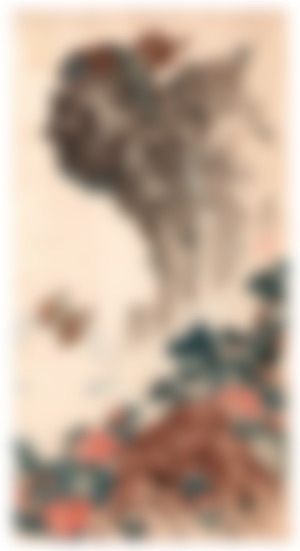
Kunimasu's Shishi Lion with Peonies (above), shows how a shishi tests the vitality of its cub by throwing it from a cliff - as they used to do, according to legend.
Wild lions have never existed in Japan (or China), but the Chinese knew about them and the Shishi absorbed their traditional symbolism. As a sign of royalty and power, embroidered shishi were used as decorations on court robes.
(This article is based on material previously published in Meriondho Leo.)
Copyright © 2020 Meleonymica/Mictorrani. All Rights Reserved.
You find all my articles on Japanese Art & Culture here.
Interested in Japanese culture? Join my community Japanese Art & Cultural History (7c1f).
You find all my writings on Read.Cash, sorted by topic, here.

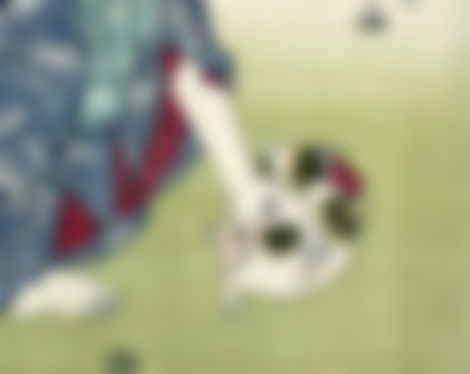
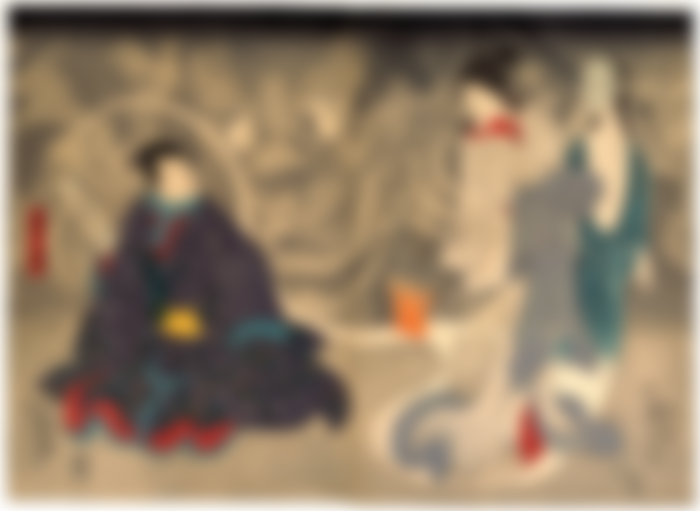
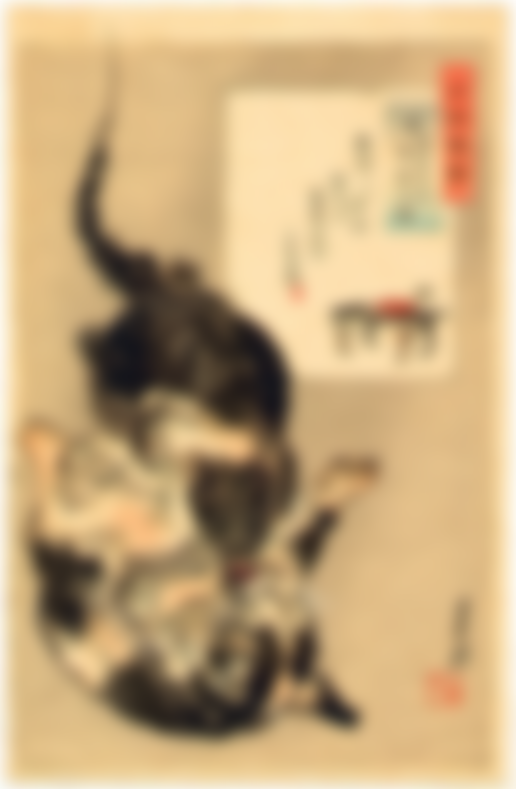
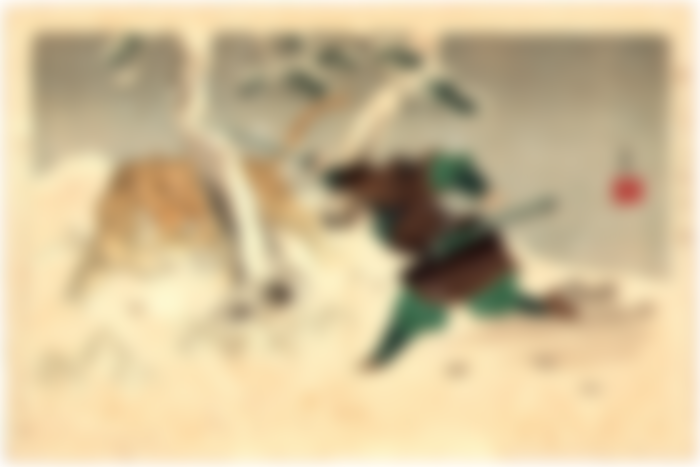


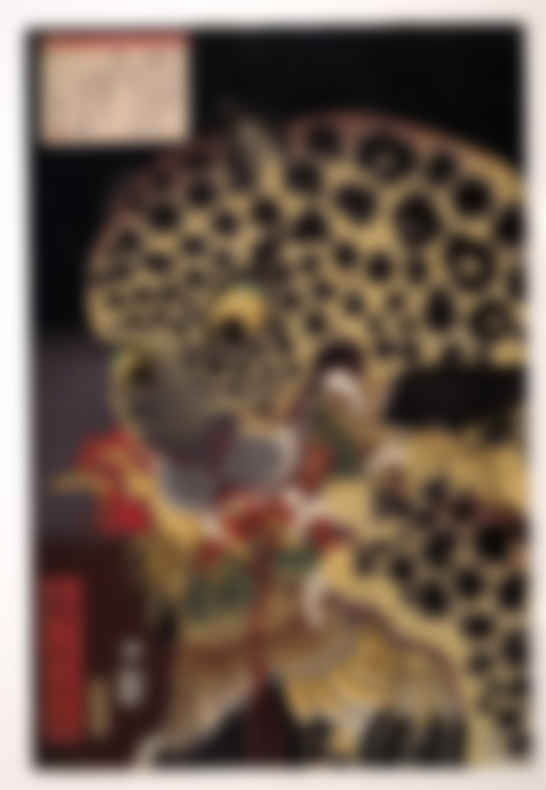
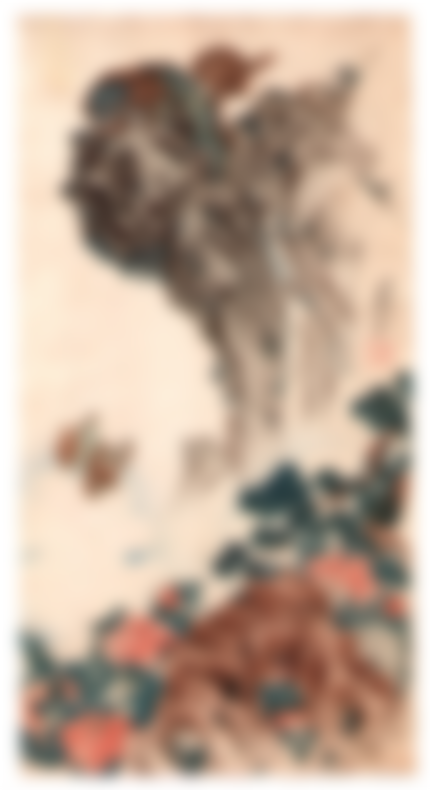
猫またをわすれたじゃないね